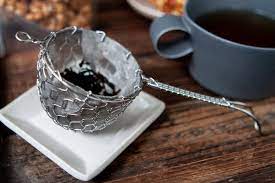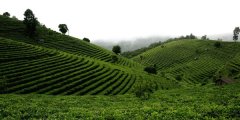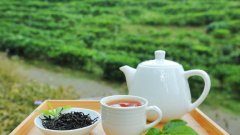Which is the better difference between Zhengshan race and Laocong black tea? the taste characteristics of what kind of tea does the smoking race belong to?
Other historical puzzles about black tea
It is said that, in any case, one of Jiang's great ancestors asked for the tea to be dried and sent to the market. Unexpectedly, foreign businessmen became interested in this completely different kind of tea. They not only bought all the tea, but also paid for the whole harvest next year. The details of the story are confusing, with some saying that these events could not have happened before the Taiping uprising of 1850-60, when soldiers invaded Wuyi Mountain and Tongmu. Whether the story is true or not, it accurately depicts the culture of black tea production in China. In China's domestic market, black tea is considered to be an unorthodox taste and has been pursued as a profitable export product. Ironically, this kind of tea is very strange in its hometown, and it later conquered the world.
The naming of black tea
In 1610, the Dutch East India Company (Dutch East India Company) first shipped tea to the Indonesian market as a commercial product, exporting tea from China. At that time, China's southeast coast was blocked by government troops and there were no open ports for trade. With the arrival of the Qing Dynasty, the closed coastline policy was lifted in 1684, and Western businessmen could buy an unprecedented amount of tea from the Fujian market. It is the Minnan dialect that names black tea as tea from other parts of the world. In Fuzhou dialect, "Lei Xun" or "smoke" is regarded by many people as the etymology of the word "Zhengshan race". "Bohea" (pronounced "Boo Hee") is derived from the pronunciation of "Wu Yi" in Fujian dialect. On that day, Wuyishan was the only producing area of black tea. Therefore, "Wuyi" or "Wuyi" is synonymous with black tea. The name has been used even when black tea is produced elsewhere.
The production of black tea
The evolution of black tea production technology is not clear, but it has some similarities with the oolong tea production process in the low mountain area of Wuyi Mountain. It is likely that in the beginning, Tongmu tea was closer to oolong tea and evolved from a botched attempt to make green tea. However, the unique quality of each region brings a different style of making tea.
The weather conditions of Tongmu and Wuyi Mountain are very different. At higher elevations, paulownia wood winters are colder and longer. The tea here is relatively small, but it can withstand many times of processing without breaking. In addition, the long winter promoted the enrichment of amino acids in Tongmu tea, coupled with the mineral-rich soil in the area, forming a unique sweetness. Even after a lot of smoking, people can still taste the sweetness and fruity of Tongmu tea-a quality lost by tea from other places.
The practice of blending tea with tobacco is itself a practice in the special environment of Tongmu Village. Tongmu and Lower Wuyi Mountain are different not only in ecosystem, but also in economy. Because of the poverty of paulownia and growing more pine rather than bamboo, tea makers burn wood as a source of heat instead of using more expensive bamboo charcoal, which is commonly used in other tea-producing areas.

How black tea is produced
Like oolong tea, the production of black tea begins with the withering of fresh tea. After withering, the tea is treated in some way to oxidize it due to abrasions. In the case of the Zhengshan race or Zhengshan race, this is done by heating the leaves to 60 to 70 degrees Celsius, stirring every 20 minutes, and when the leaves become soft, roll them up, shape them, and then put them into a wooden box to oxidize. When the leaves turn copper and the veins turn red, stir-fry at about 200 degrees for 2-3 minutes, then roll out and shape for 5-7 minutes until tightened. Then put the tea in a bamboo basket and bake it slowly for 8 to 10 hours on a pine-heated pottery stove.
It is incorrect to think that the first kind of black tea, the smoking Zhengshan race, is dried on an open fire. The smell of their smoke comes from the earthen stoves in Tongmu Village. The oven is designed to warm the floor of the enclosed space, which is paved with stone to provide radiant heat. These ovens leak a certain amount of smoke, and the best ovens leak the least. But even a well-made oven cannot suppress the smell of the pine fire that heats the oven. In the oven, the shelf for the tea tray has been blackened by smoke. The smell of the building is enough to make the tea stored there smoky, but when people want a stronger smell, they adjust the oven to let more smoke out. Compared with the small bamboo charcoal baking baskets used to make oolong tea, these ovens are so large that three-story teahouses have been built on them.
Important Notice :
前街咖啡 FrontStreet Coffee has moved to new addredd:
FrontStreet Coffee Address: 315,Donghua East Road,GuangZhou
Tel:020 38364473
- Prev

The Origin, Development and History of Zhengshan Race Black Tea A short story about Jin Junmei's origin
The colorful history of black tea there is still a lot of debate among tea scholars about when black tea was invented. What we can be sure is that by the 16th century, black tea began to appear in China's tea market.
- Next

What is the taste of Taicha No. 18 Hongyu black tea? is Yuchi black tea Riyue Lake black tea expensive?
In 1926, the first Assam variety was introduced and planted on the hills around Riyue Lake in Nantou County. The climate, environment and soil of the lake are considered to be the most similar to the Assam tea garden in India. Today, most of Taiwan's black tea produced by Riyuetan comes from three different varieties: a purebred Assam, a local variety, and a hybrid called No. 18. Number 18
Related
- The milk tea cup becomes smaller?! Overlord Tea Girl launches a new "Return to Yunnan" series
- Accused of selling counterfeit and high-priced coffee beans! Well-known boutique coffee brand "Oukelao" bowed and apologized!
- How to make espresso dumplings? Can I eat coffee and glutinous rice balls together?
- Save the unformed and stagnant powder cakes in one second! What is the problem with stagnant water in the powder bowl of the espresso machine?
- What does hand-brewed coffee stop mean? Why is it not recommended to make coffee by hand?
- Is it normal to smell like coffee? Why does coffee smell like alcohol? What's wrong with the strong smell of cold extract ice dripping ice brewed coffee?
- How to solve the problem that hand-brewed coffee extraction takes too long? Why is the water flowing so slowly when making coffee?
- The main points of making Australian white coffee, the proportion details, how does Australian white properly foam and blend the flowers?
- Can ice water make cold extract coffee? What is the difference between room temperature water and ice water for making cold coffee?
- What milk is best for making latte and white Dirty coffee? What is the difference between different brands of fresh milk and pure milk for making coffee?

